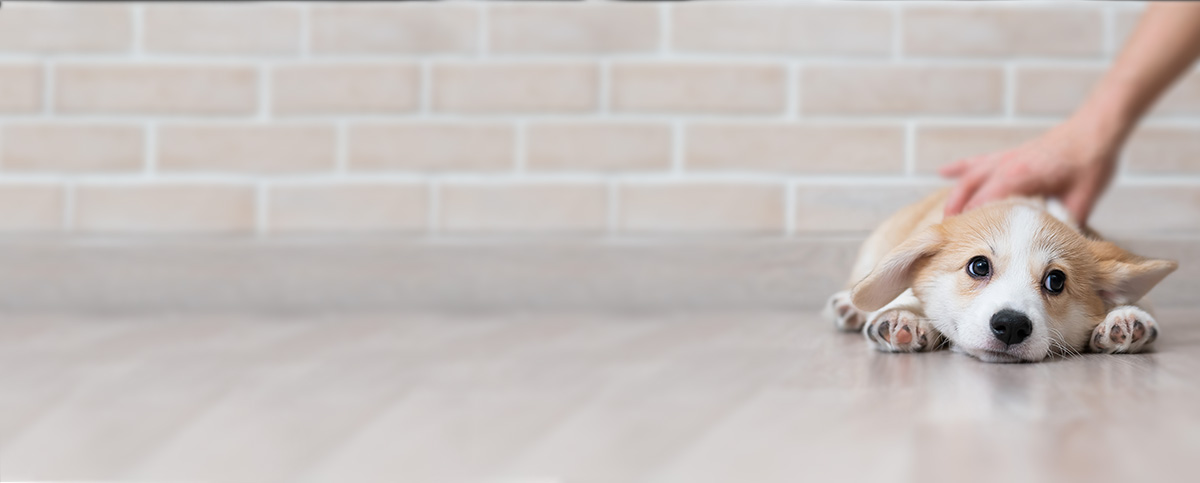Feline Idiopathic Cystitis
Feline lower urinary tract disease (FLUTD) or feline idiopathic cystitis (FIC), are terms describing the following group of clinical signs (not all signs need to be present):
- bloody urine
- straining to urinate (can easily be mistaken for straining to defecate)
- urinating in inappropriate/unusual places
- urinary blockage (almost exclusively a male cat problem and constitutes an emergency)
- licking the urinary opening (usually due to pain).
Causes
The average age of a cat with FLUTD is 4 years. Of all cats with FLUTD:
- 50% will not have a cause that can be identified despite extensive testing.
- 20% will have bladder stones. * 20% will have a urethral blockage.
- 1-5% will have a true infection.
- 1-5% will have a urinary tract cancer.
- 1-5% will have had trauma to the urinary tract (i.e., have been hit by a car etc.)
- 1-5% will have a combination of a bladder stone and an infection.
Hundreds of studies have been conducted to determine which causes are most likely for which cats. What has emerged from these studies is that for young adult cats, a definitive cause for the syndrome we call FLUTD cannot usually be found. These cats are said to have feline idiopathic cystitis or FIC, which means bladder inflammation of unknown cause.
Features of FIC
- Lower urinary tract signs tend to recur.
- There seems to be an association with environmental stress.
- FIC seems to be a younger cat problem, with episodes decreasing in frequency as the cat gets older.
- Urinary crystals, previously believed to be central to the syndrome, seem to be involved only peripherally.
- Numerous therapies have been used to curtail the episode once it has started but because the episode seems to last a week or two regardless of treatment, it is hard to be sure what is working.
- As difficult as it is to address an episode in progress, more success has been achieved in preventing future episodes.
Why Do only some Cats get FIC?
We know that cats that get this syndrome have a unique imbalance in the way their brain controls hormones. In other words, these cats are unusually sensitive to environmental stress and, due to a complicated cascade of metabolic events, stress manifests in the urinary tract.
There are two parts of therapy: treating the episode and preventing future episodes.
Treatment of the Non-Obstructed Cat
- Treating the Defective Mucous Lining- One theory says that the PSGAGs that line the bladder wall become patchy from abrasive crystals and abnormal pH, leading to tissue exposure and inflammation. Treating with PSGAG (Adequan) injections is aimed at helping restore this barrier.
- Altering Dietary/Urinary pH- Some cats are prone to a high urinary pH that can lead to crystal formation. Changing to a prescription urinary diet which prevents these crystals can help prevent further episodes of FIC.
- Antibiotics- While true infection is not typically involved in FIC, antibiotics are still commonly prescribed. There is controversy about antibiotic use since research seems to indicate that antibiotics may not alter the course of a typical episode. Antibiotics cover the 1-2% of cats that truly do have infection and some feel that some antibiotics have additional anti-inflammatory properties separate from their antibacterial ones.
- Pain Medications / Anti-inflammatories - These medications are used to help with inflammation, pain, and discomfort. They may not alter the course of the episode, but can make the patient more comfortable.
- Anti-anxiety medications- These medications address the stress component, but can take weeks to reach maximum effect. They are probably best used for prevention, but some patients seem to respond very quickly to this type of therapy. Typical medications include: fluoxetine, clomipramine, and amitriptyline.
- Subcutaneous fluids- Two purposes are achieved by giving fluids under the skin. The first is distending the bladder, which can release inflammatory chemicals, leading to less on-going pain. Fluids also dilute the urine, which dilutes irritants.
Prevention of Future Episodes
- Increasing water intake - The best way to increase water intake is to feed canned food since it is 80% water. Also, offering clean sources of water or getting a drinking fountain can encourage cats to drink. Increased water intake helps dilute the urine, which leads to less inflammation and fewer episodes. This is the #1 treatment for prevention of FIC
- Decreasing stress
- Environmental enrichment (toys, activities, interaction, scratching posts)
- https://indoorpet.osu.edu/cats for more info
- Decrease stressful interactions with other animals (own food/water dishes)
- Feliway pheromone plug in dispensers
- Appropriate number of litter boxes (# of cats plus 1 minimum)
- Anti-anxiety medications (amitriptyline, clomipramine, fluoxetine)
- Decreasing chronic inflammation - Glucosamine supplements (Dasuquin) are thought to decrease some of the inflammation associated with FIC. Flo is a supplement from VRS that can decrease episodes of FIC over time.
Cookies on this website are used to both support the function and performance of the site, and also for marketing purposes, including personalizing content and tailoring advertising to your interests. To manage marketing cookies on this website, please select the button that indicates your preferences. More information can be found in our privacy policy here.


